Lemon Meringue Pie
This post may contain affiliate links. Read the full disclosure here.
Lemon meringue pie is a bright and citrusy dessert. It’s topped with sweet meringue, and is filled with lemon curd, nostalgia and comfort. This lemon pie recipe is a great dessert to make in the summer when you want something light and sweet with a punch of citrus power.
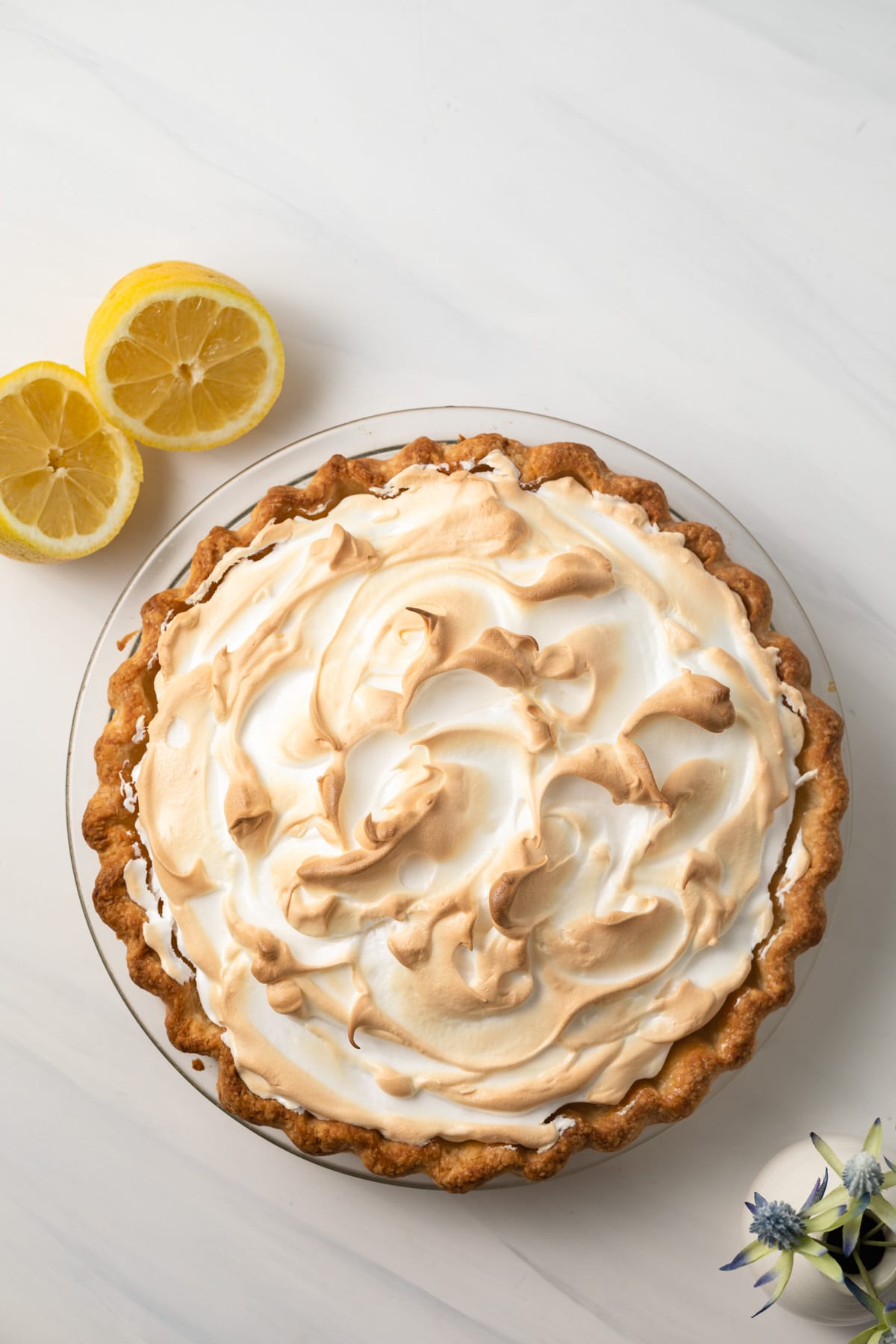
Lemon meringue pie is a ‘bottom crust pie’ meaning, obviously, that it only has a pastry crust on the bottom of the pie.
Despite not having an upper crust, this is no ordinary dessert. Humble, yes, but there is nothing plain or simple about the sweet toasted billowy meringue topping and delicious pucker-inducing lemon filling.
Like most things, this recipe begins with its foundation. And here the foundation is a flaky buttery pastry crust. I use my pie crust recipe but have repeated it here. When making this crust, I use a combination of shortening for flakiness and butter for flavor. And the key to any crust – don’t use too much water! You want the crust to be light and flaky, not dense.
Lemon meringue pie was originally called lemon cream pie. Its creation is attributed to the Quakers outside of Philadelphia. With its flaky crust, cool lemon curd filling, and fluffy toasted meringue, it’s no wonder it quickly became a well-loved dessert throughout the country. It’s so popular that August 15th has been designated national Lemon Meringue Pie day.
For me, lemon meringue pie brings up images of a 1950’s diner. Full-blown Americana. I picture red vinyl booths, a cup of bad coffee, and a neon ‘open’ sign flashing in the window. And a lemon meringue pie with giant clouds of toasted meringue in a metal pie tin on the counter, slices being sold one by one.
So plan to make this pie for yourself to celebrate Lemon Meringue Pie day in August, but you will probably want to give it a try a few times between now and then too.
If you are craving lemon desserts, my lemon cake is one of my favorites, and I can’t keep these lemon bars in my house for more than a day or two – they just seem to disappear.
Recipe Details
- Taste – Sweet and tart.
- Texture – Creamy filling with a flaky crust and fluffy meringue.
- Ease – Easier than you think, trust me!
- Time – 3 hours start to finish, but half of that is chilling time.
What You’ll Need
This list of ingredients might seem long, but when you think about the fact that this list makes a crust, a filling and a topping, it is a little less daunting!
Ingredients
- Flour: I use plain all-purpose flour. You can use half all-purpose and half cake flour to a more tender crust.
- Sugar: Just a touch for sweetness in the crust, and more in the filling and the meringue.
- Eggs: You’ll need yolks for the filling and whites for the meringue.
- Salt: A pinch of salt helps to balance the flavors.
- Butter: Use unsalted butter and make sure it is cold. Keep in mind the more butter you use, the more delicate the crust will be.
- Shortening: Crisco vegetable shortening is my preferred choice. It should be cold as well.
- Lemon zest: A little lemon zest gives an extra punch of tanginess.
- Lemon juice: I highly recommend using fresh lemon juice for the filling. It’s less tart and less acidic than bottled juice.
- Cornstarch: Helps to thicken the filling and also holds the shape of the meringue.
- Vanilla extract: Just a touch to give a little flavor to the meringue.
- Water: You’ll need a few tablespoons of ice water to get the dough to hold together. You’ll need more for the filling and the meringue.
Recommended tools
- Pie Pan: Use a metal or tempered glass pan.
- Pie Weights: I like to use pie weights to keep my pie crust from getting air bubbles.
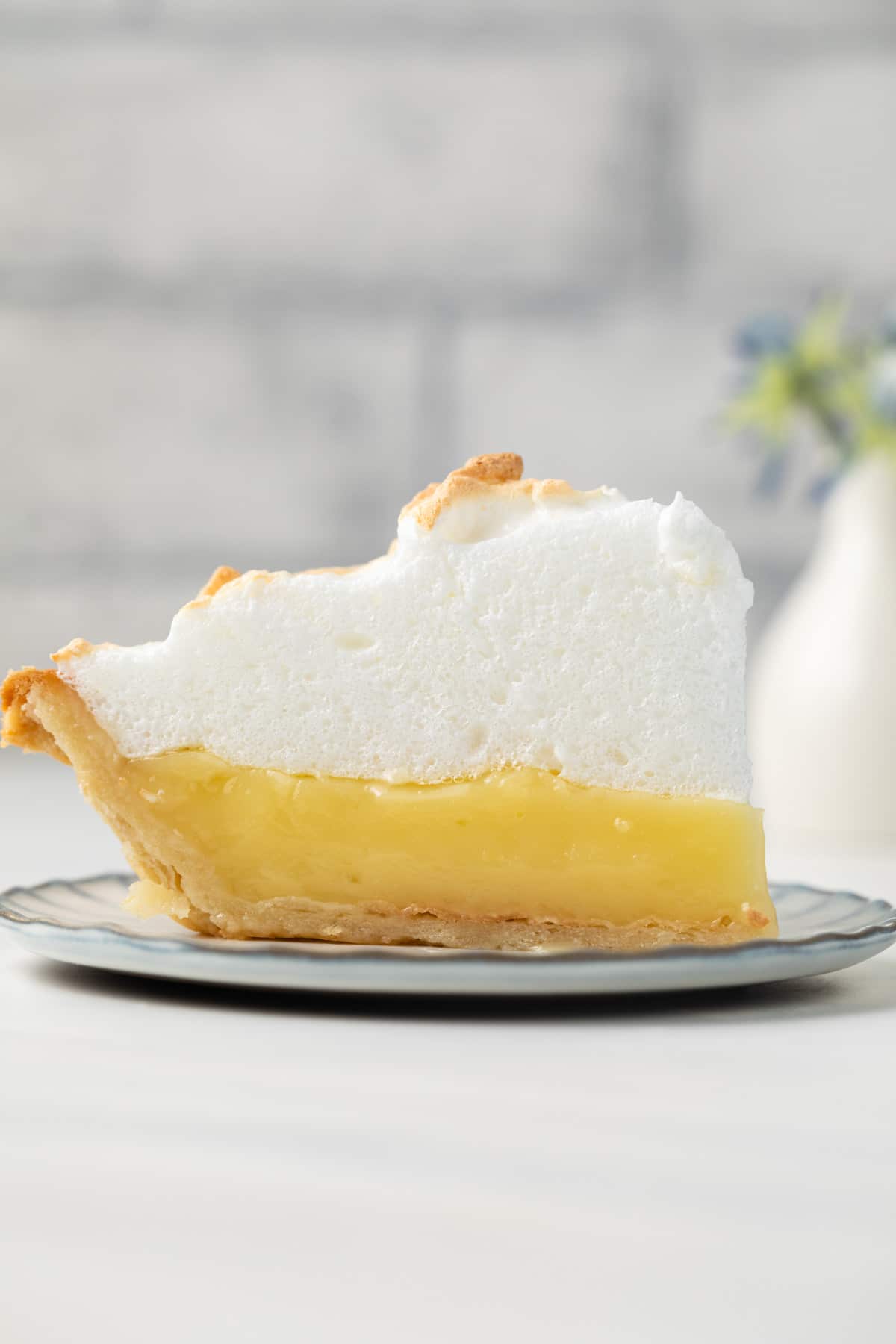
How to Make Lemon Meringue Pie
Lemon Meringue Pie is a three-step recipe. You first make the crust, then the filling, and then finally the fluffy delicious meringue.
Make the pie crust
- Combine the ingredients: Combine the flour, sugar, and salt in a large mixing bowl. Stir with a whisk until well mixed. Use a pastry cutter or two knives to cut the butter and shortening into the flour mixture just until lentil-sized crumbs form. A few larger bits are perfectly okay.
- Moisten the crust: Drizzle just enough ice water over the flour to moisten it. Toss the mixture together with a fork to combine. You will have enough liquid when you can squeeze the mixture and it holds together.
- Knead the dough: Turn the dough out onto a work surface and gently knead until the dough comes together. Flatten the dough into a disk, wrap tightly in plastic wrap, and refrigerate for at least 30 minutes.
- Prepare the dough: Roll the dough into a circle that’s about 4-inches larger than the diameter of your pie pan. Gently place it in the pie pan without stretching it. Trim the edge so there’s a 1-inch overhang over the sides of the pie pan. Fold the excess dough under so it sits up on the rim of the pan and flute as desired. Refrigerate for 1 hour. Meanwhile, adjust the oven rack to the lower-third position and preheat to 400°F.
- Bake the Crust: Remove the crust from the refrigerator and line the shell with parchment paper. Make sure the parchment paper is large enough that it’s easy to pick up by the ends. Fill the lined shell with pie weights, uncooked rice, or dried beans. Make sure the weights are evenly distributed in the shell and some are pressed up the sides. Bake the crust for 15 minutes, until it starts to turn lightly golden. Carefully remove the pie weights and return the crust to the oven to continue baking for another 15 minutes, until golden brown and matte looking instead of shiny. If the edges of the crust begin to brown too much, cover with an aluminum ring or pie shield. Set on a wire rack to cool completely before adding the filling.
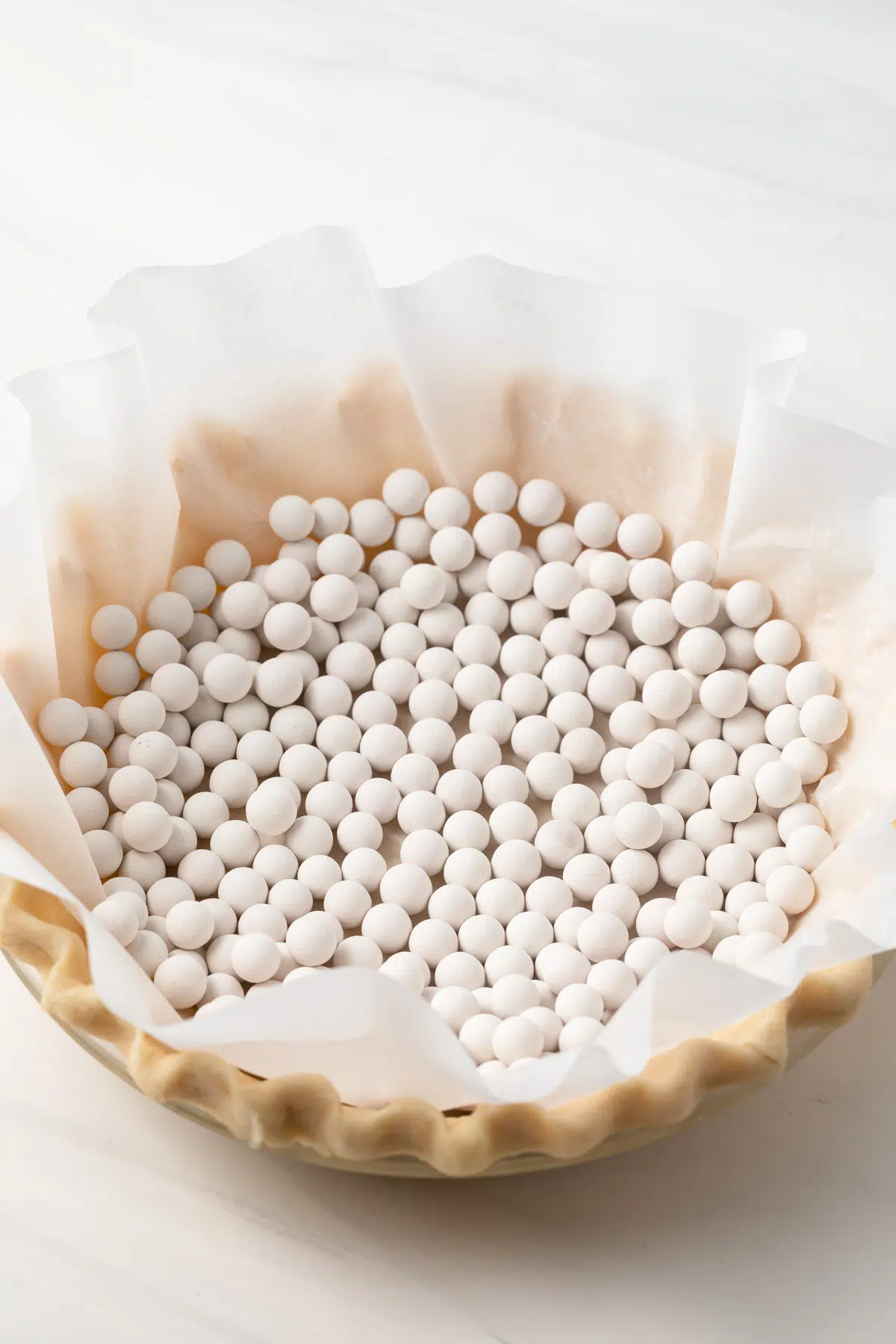
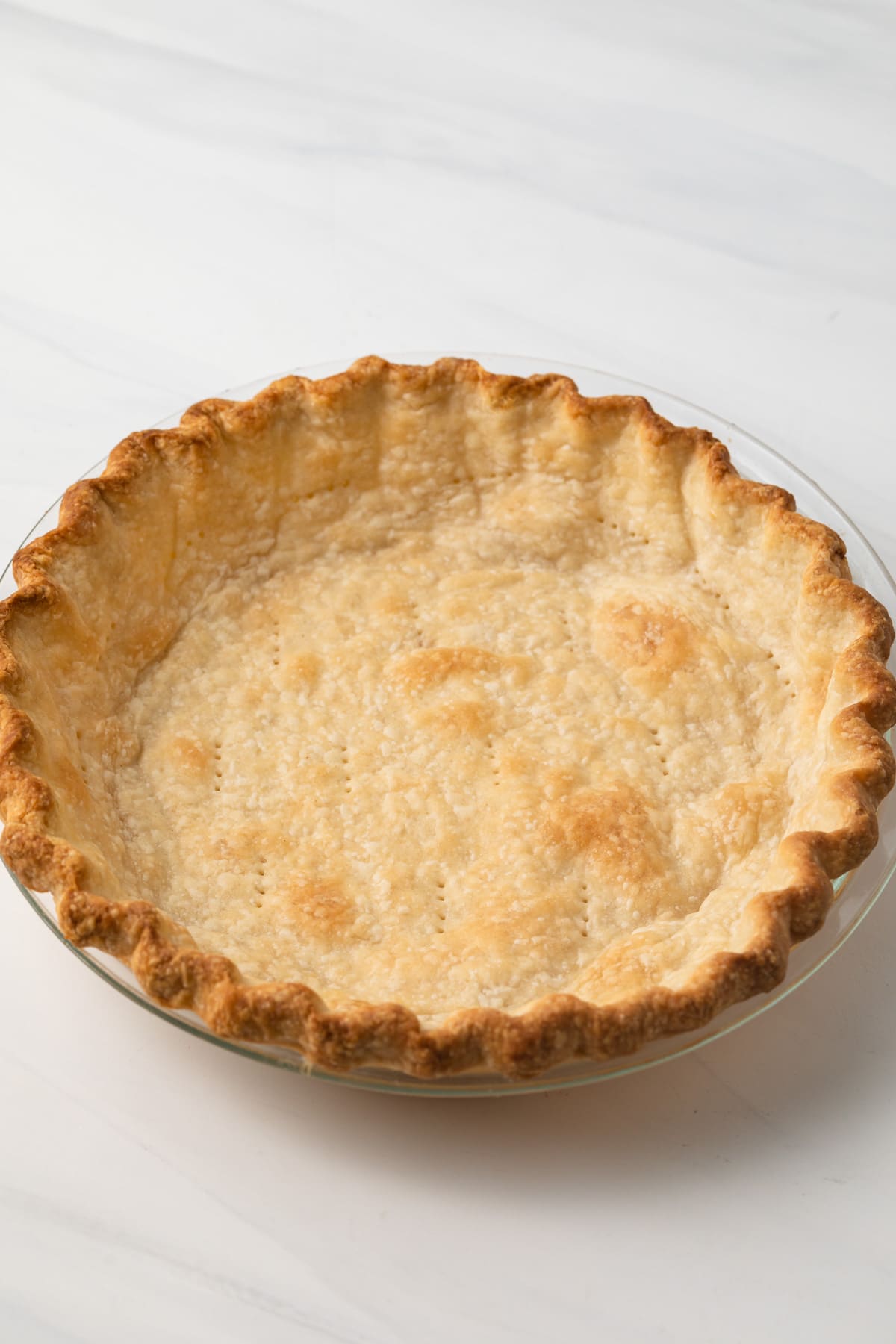
Make the filling
- Dissolve the sugar: In a heavy saucepan, combine the sugar, cornstarch, salt, and water. Cook over medium-high heat, whisking constantly until the mixture becomes thick and almost clear, about 3-5 minutes.
- Temper the Eggs: Remove from heat and pour about ½ cup of the filling into a small bowl. Whisk in the egg yolks to temper them (means increase the temperature slightly so the eggs won’t scramble when added to a hot liquid) then return the mixture back into the pot and whisk to combine. Return to the heat and cook, stirring constantly until thick and smooth.
- Add citrus: stir in the lemon juice and zest. Remove the filling from the heat and stir in the butter until melted.
- Fill the pie crust with the lemon filling.
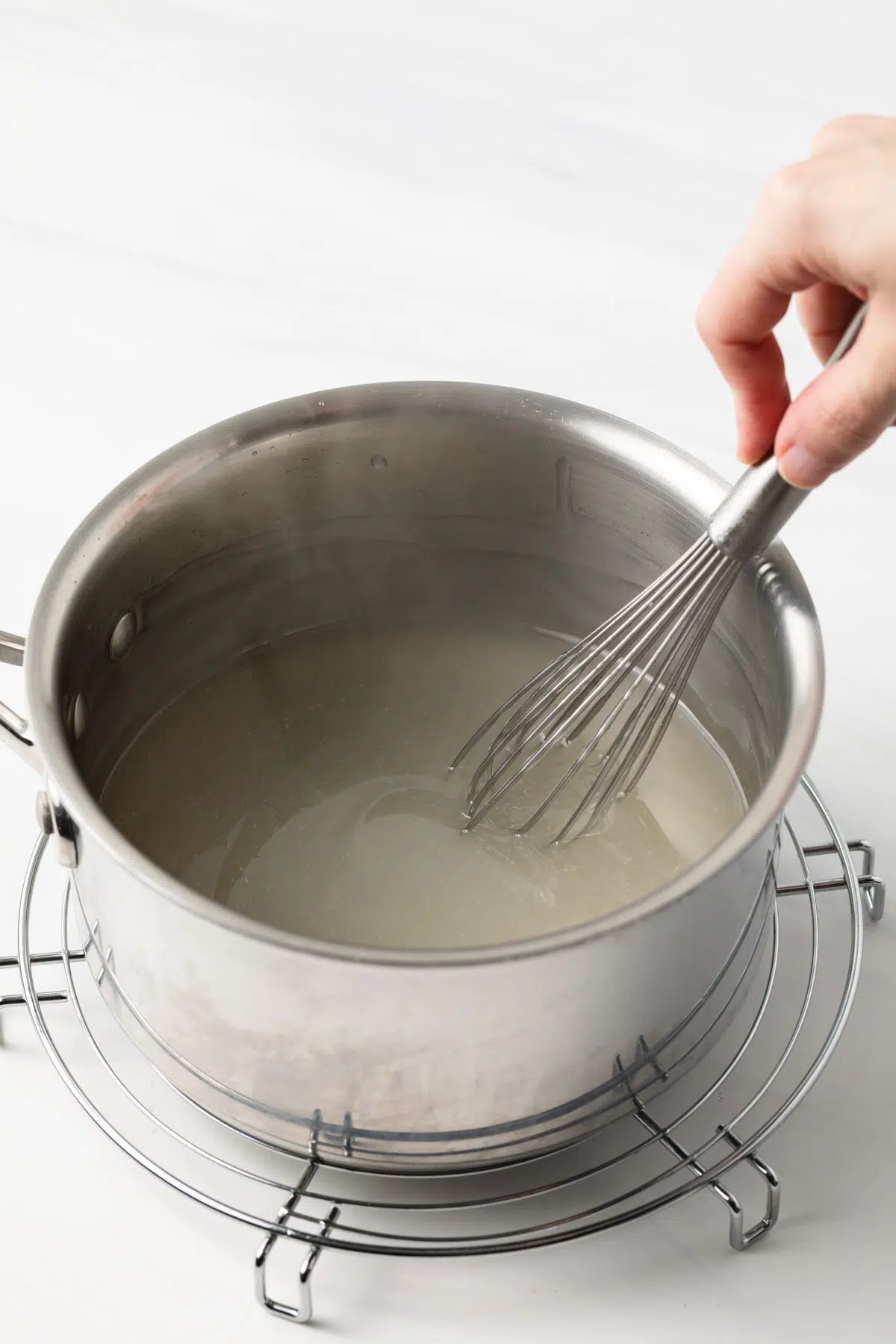
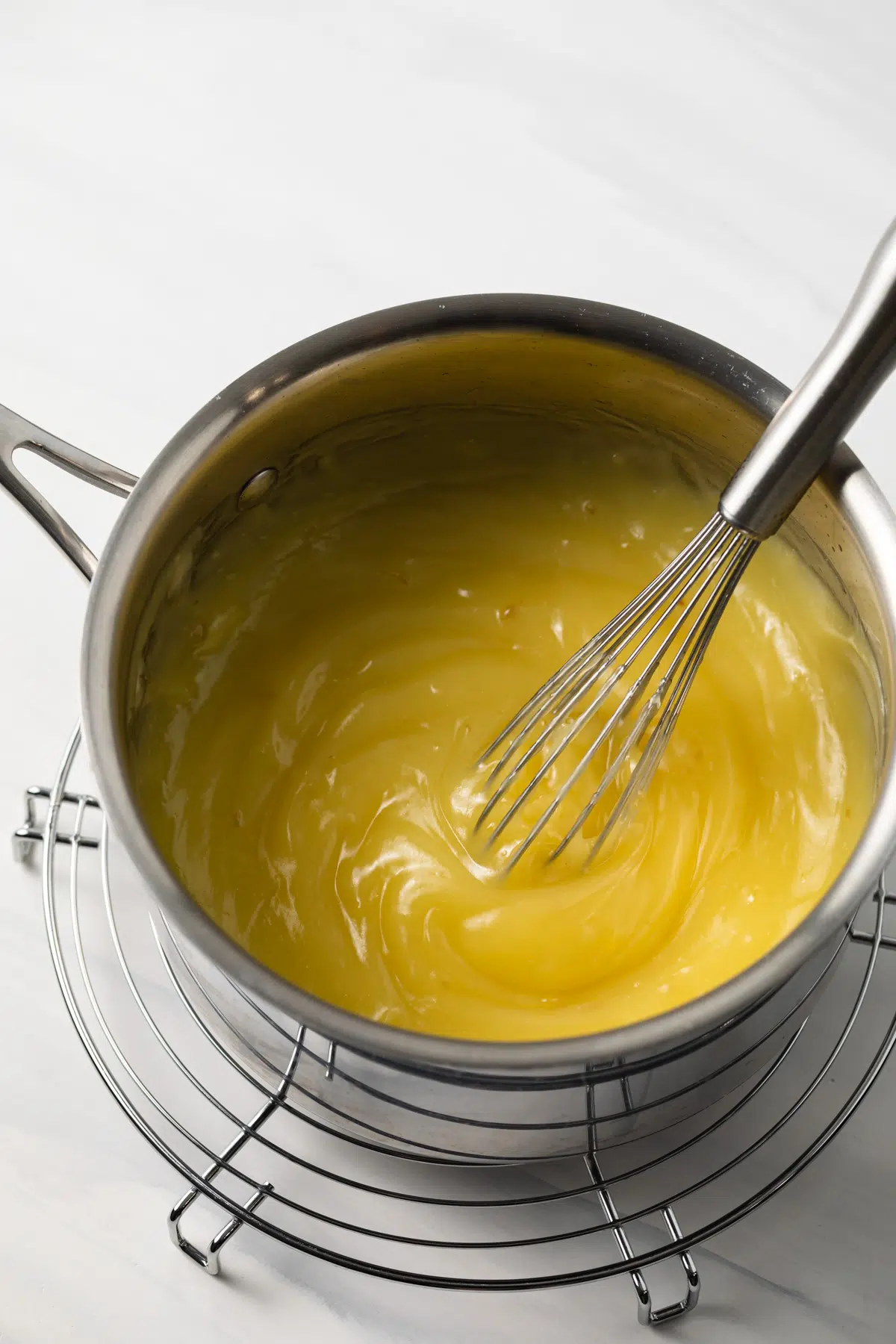
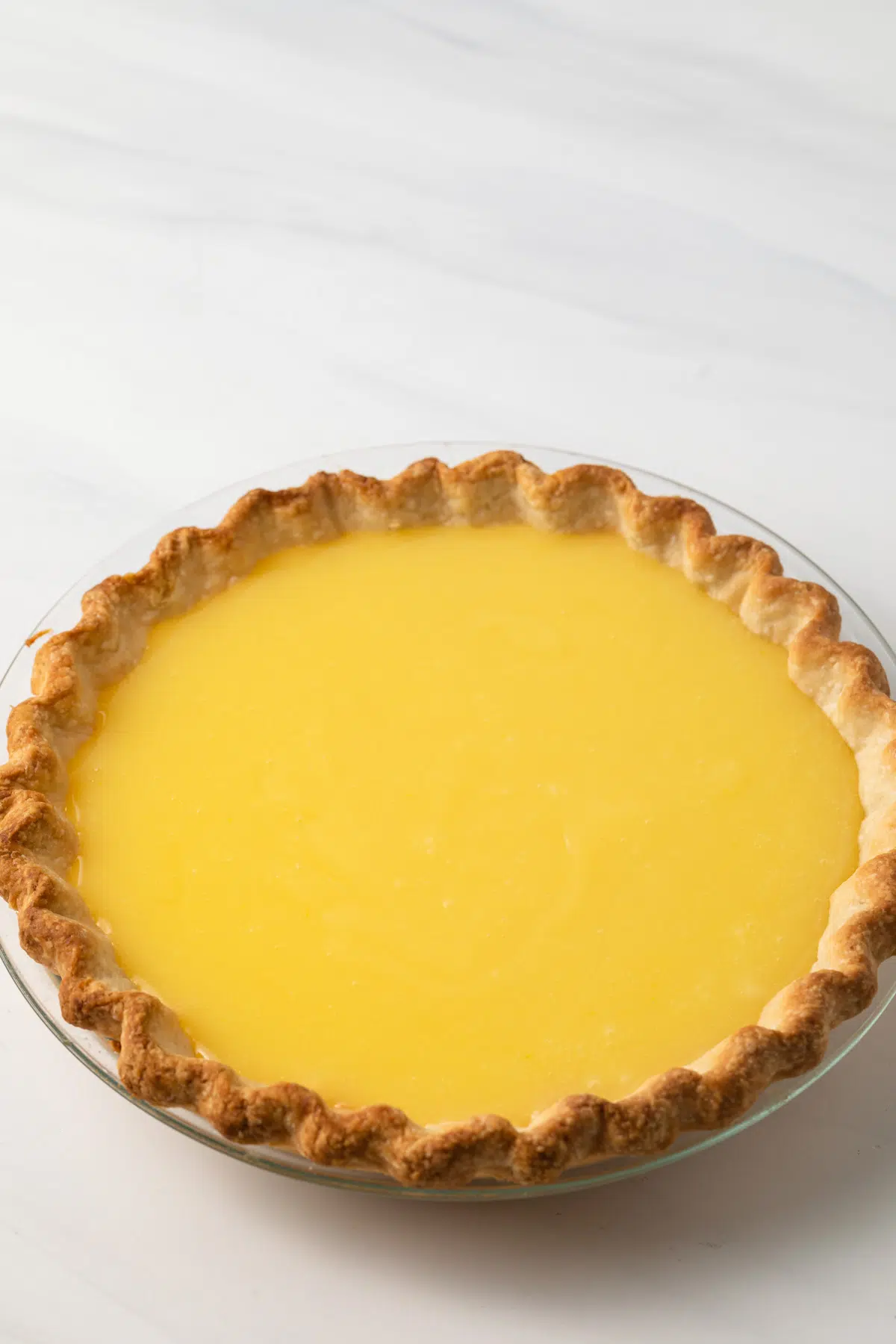
Make the meringue
- Preheat the oven to 400°F.
- Dissolve cornstarch: Combine the cornstarch and water in a small saucepan. Cook over medium-high heat, whisking constantly, until the mixture becomes thick and almost clear, about 3 minutes. Remove from heat and set aside.
- Beat egg whites: Using a stand mixer fitted with the whisk attachment or a handheld electric mixer, whip the eggs whites at medium-high speed until foamy. Slowly add the sugar while continuing to mix until soft peaks form. Gradually add the cornstarch mixture and continue to mix until the meringue is stiff and glossy, not dry or sponge-looking. Gently mix in the vanilla extract.
- Top the pie. Mound the meringue over the filling, creating decorative patterns with the spatula. Be sure to spread the meringue to the edge of the crust so that all of the filling is covered. Bake for 5-8 minutes, until the meringue is browned.
- Cool and enjoy. Set on a wire rack to cool completely before slicing. Lemon meringue pie is best enjoyed the day it is made. The filling and meringue texture won’t the be same after day one.
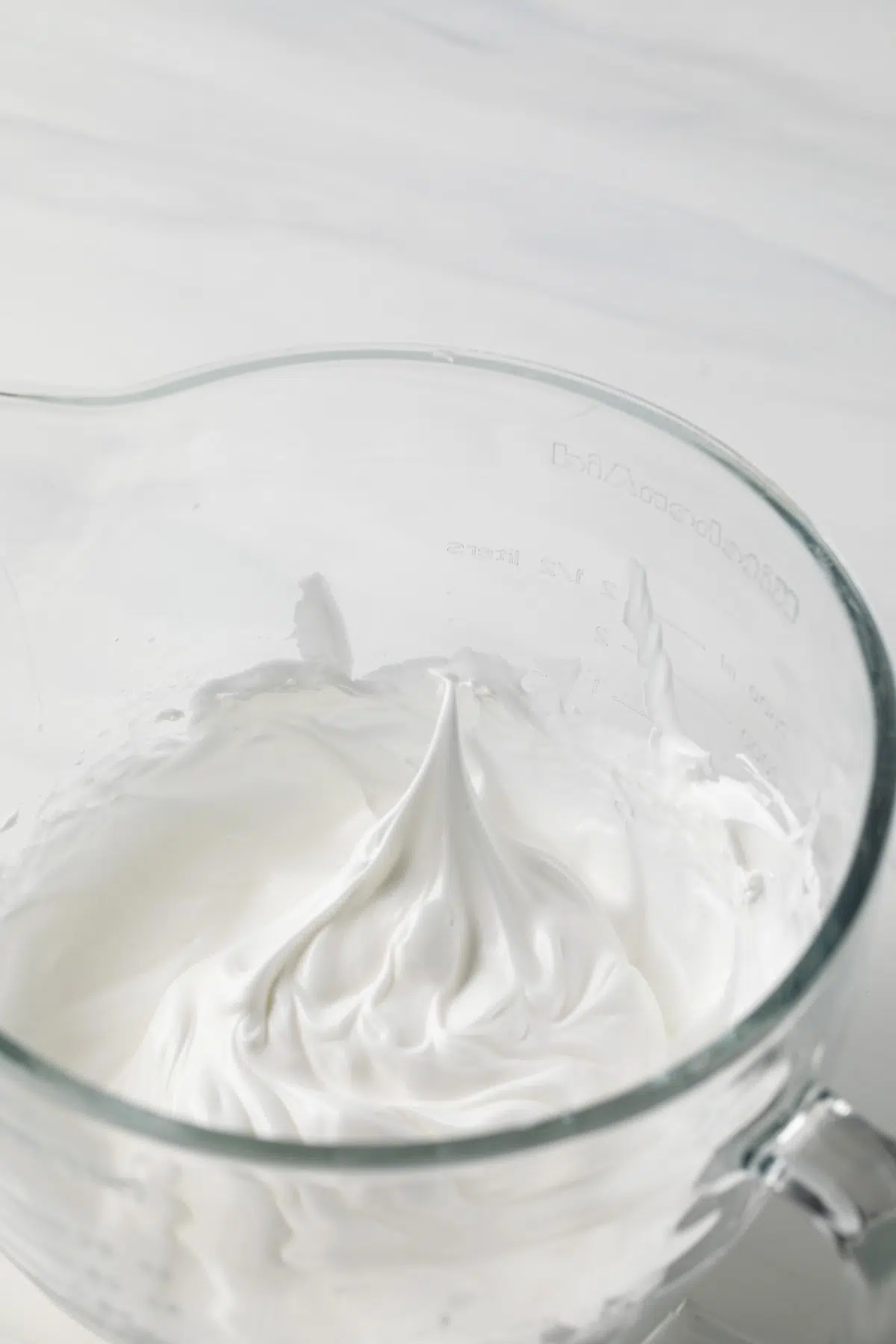
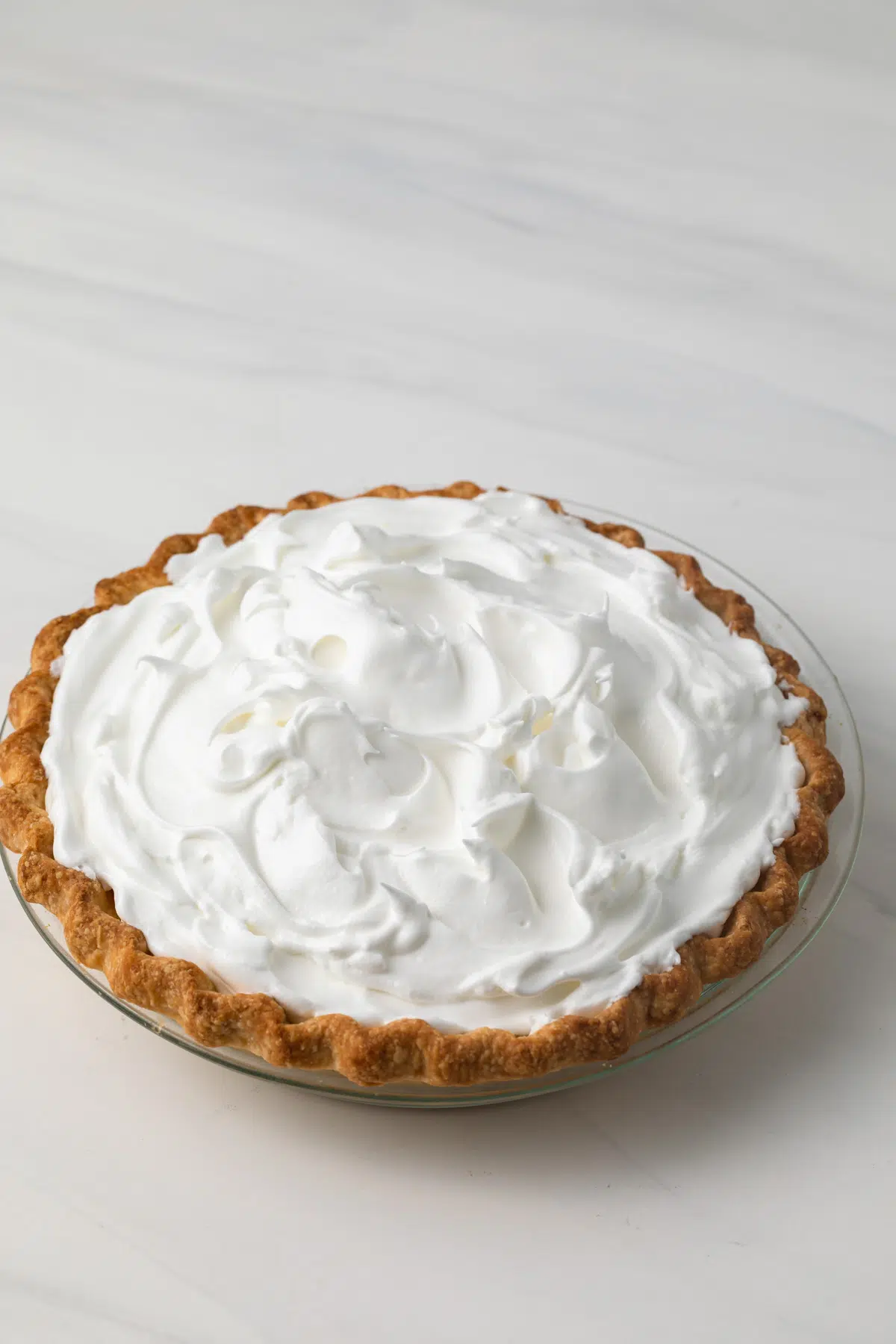
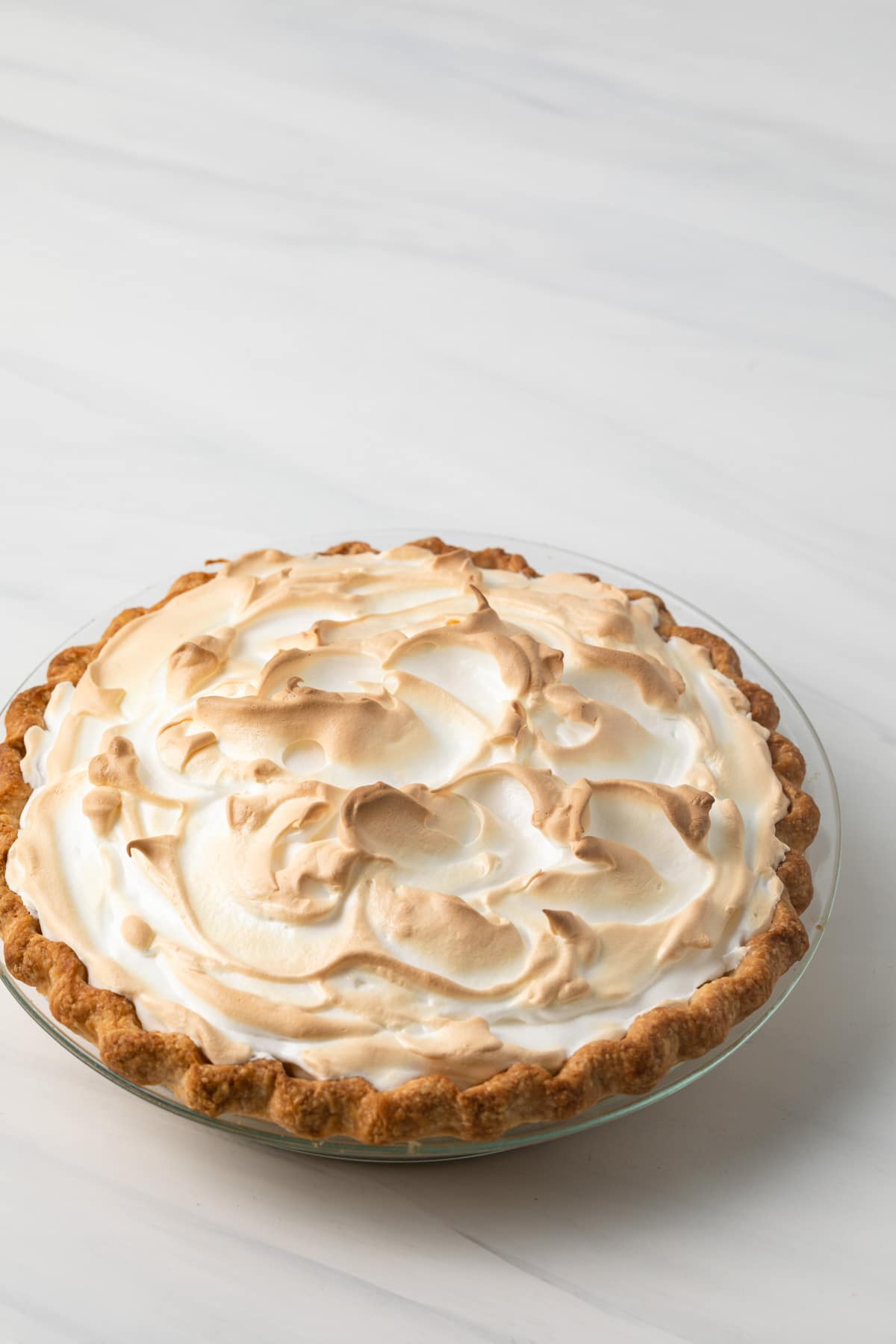
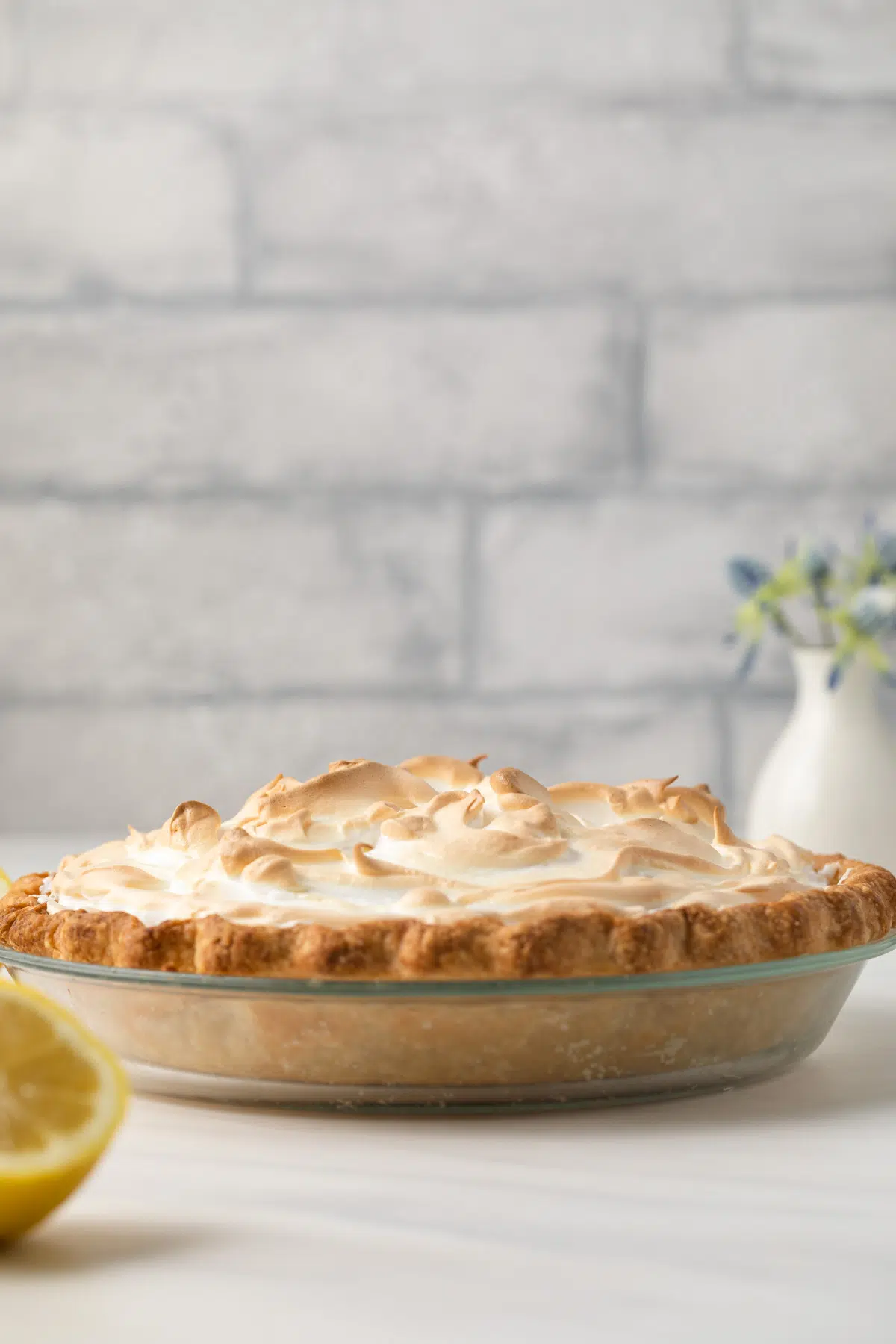
Tips For Success
- Lemon juice: Freshly squeezed lemon juice will offer the best flavor.
- Lemon zest: Avoid the pith, the white part under the yellow skin, when zesting. It can cause the filling to taste bitter.
- Meringue: The meringue can be made without the cornstarch gel but I don’t recommend it. The gel helps to prevent the meringue from weeping and shrinking.
Storage & Freezing
This pie is best eaten on the day it is made. The meringue just doesn’t hold up the same overnight.
Lemon Meringue Pie
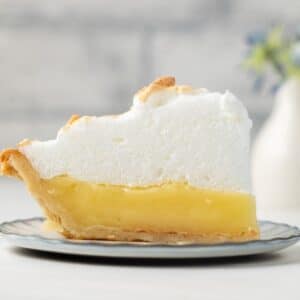
Ingredients
For the crust
- 1 ½ cups (195 g) all-purpose flour
- 2 tablespoons granulated sugar
- ¼ teaspoon salt
- 5 tablespoons unsalted butter, cold & cut into pieces
- 4 tablespoons vegetable shortening, cold & cut into pieces
- 5 tablespoons ice water
For the filling
- 1 ½ cups (300 g) granulated sugar
- 5 tablespoons (50 g) cornstarch
- ¼ teaspoon salt
- 1 ½ cups (360 g) cold water
- 5 egg yolks
- ½ cup (120 ml) fresh lemon juice
- 1 tablespoon lemon zest
- 1 tablespoon unsalted butter
For the meringue
- 1 tablespoon (10 g) cornstarch
- ¼ cup (60 ml) water
- 5 egg whites, room temperature
- ½ cup (100 g) granulated sugar
- ½ teaspoon vanilla extract
Instructions
Make the pie crust
- Combine the flour, sugar, and salt in a large mixing bowl. Stir with a whisk until well mixed.
- Using a pastry cutter or two knives cut the butter and shortening into the flour mixture just until lentil sized crumbs form. A few larger bits are perfectly okay.
- Drizzle just enough ice water over the flour to moisten it. Toss the mixture together with a fork to combine. You will know you have enough liquid when you can squeeze the mixture and it holds together.
- Turn the dough out onto a work surface and gently knead until the dough comes together. Flatten the dough into a disk, wrap tightly in plastic wrap, and refrigerate for at least 30 minutes.
- When ready to use, roll the dough into a circle that's about 4-inches larger than the diameter of your pie pan. Gently place it in the pie pan without stretching it.
- Trim the edge so there's a 1-inch overhang over the sides of the pie pan. Fold the excess dough under so it sits up on the rim of the pan and flute as desired. Refrigerate for 1 hour.
- Meanwhile, adjust the oven rack to the lower-third position and preheat to 400°F.
- Remove the crust from the refrigerator and line the shell with parchment paper. Make sure the parchment paper is large enough that it's easy to pick up by the ends once it's time to remove the pie weights.
- Fill the lined shell with pie weights, uncooked rice, or dried beans. You won't be able to cook the rice and beans later but they can be saved and reused for future pies. Make sure the weights are evenly distributed in the shell and some are pressed up the sides.
- Bake the crust for 15 minutes, until it starts to turn lightly golden. Carefully remove the pie weights and return the crust to the oven to continue baking for another 15 minutes, until golden brown and matte looking instead of shiny. If the edges of the crust begin to brown too much, cover with an aluminum ring or pie shield.
- Set on a wire rack to cool completely before adding the filling.
Make the filling
- In a heavy saucepan, combine the sugar, cornstarch, salt, and water. Cook over medium-high heat, whisking constantly until the mixture becomes thick and almost clear, about 3-5 minutes.
- Remove from heat and pour about ½ cup of the filling into a small bowl. Whisk in the egg yolks to temper them then return the mixture back into the pot and whisk to combine. Return to the heat and cook, stirring constantly until thick and smooth.
- Stir in the lemon juice and zest. Remove the filling from the heat and stir in the butter until melted.
- Fill the pie crust with the lemon filling.
Make the meringue
- Preheat the oven to 400°F.
- Combine the cornstarch and water in a small saucepan. Cook over medium-high heat, whisking constantly, until the mixture becomes thick and almost clear, about 3 minutes.
- Remove from heat and set aside.
- Using a stand mixer fitted with the whisk attachment or a handheld electric mixer, whip the eggs whites at medium-high speed until foamy. Slowly add the sugar while continuing to mix until soft peaks form.
- Gradually add the cornstarch mixture and continue to mix until the meringue is stiff and glossy, not dry or sponge-looking. Gently mix in the vanilla extract.
- Mound the meringue over the filling, creating decorative patterns with the spatula. Be sure to spread the meringue to the edge of the crust so that all of the filling is covered.
- Bake for 5-8 minutes, until the meringue is browned.
- Set on a wire rack to cool completely before slicing. Lemon meringue pie is best enjoyed the day it is made. The filling and meringue texture won't the be same after day one.
Notes
- Lemon juice: Freshly squeezed lemon juice will offer the best flavor.
- Lemon zest: Avoid the pith, the white part under the yellow skin, when zesting. It can cause the filling to taste bitter.
- Meringue: The meringue can be made without the cornstarch gel but I don’t recommend it. The gel helps to prevent the meringue from weeping and shrinking.
- Pie Pan: Use a metal or tempered glass pie pan.
Nutrition
The nutrition information provided is for convenience and as a courtesy only. It is not guaranteed to be accurate because nutrition information can vary for a variety of reasons. For precise nutritional data use your preferred nutrition calculator and input the exact ingredients and brands you used in the recipe.

I made this Lemon Meringue Pie and it was so delicious that I will make it again!